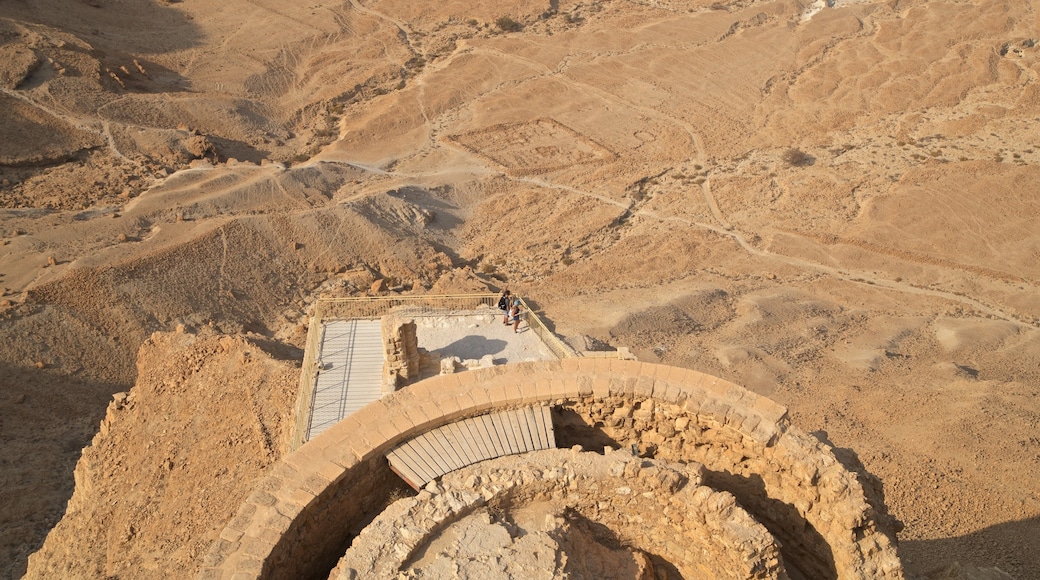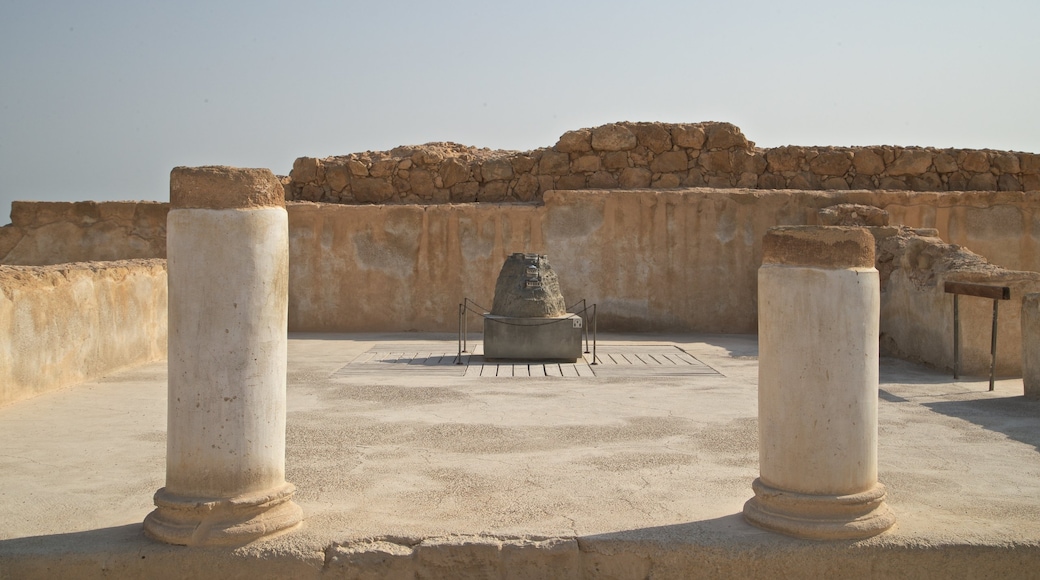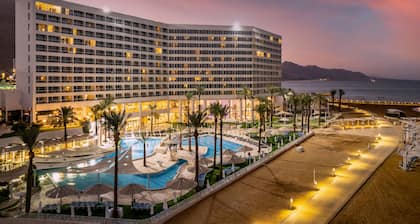Perched high above the Dead Sea and Judean Desert, Masada National Park was a great fortification built by King Herod. Today the well-kept remains offer staggering views as well as a fascinating insight into Roman history and one of the most famed acts of Jewish rebellion.
In A.D. 66, Masada was captured by the Jewish sect known as the Sicarii during their revolt against the Romans and became the last Jewish stronghold. Following a long siege, the Romans eventually stormed the fortress but all 960 zealots had committed suicide. Visit to discover not only this history but what is today one of Israel’s most celebrated patriotic sites.
Make your way 1,300 feet (400 meters) up the sheer cliffs, either by cable car or a steep walk up the Snake Path, to get to the ruins. Many of the buildings have been carefully restored. Among the most impressive sights are the wall paintings inside Herod’s two palaces. Visit the throne room and swimming pool, which are examples of the luxurious lifestyle Herod enjoyed here.
Be sure to visit the bathhouses designed in a Romanesque style and also well restored. Herod built his palace here to harness the healing properties of the Dead Sea. In addition. you will find a synagogue which some historians believe may be the oldest in the world, as well as a 5th-century Byzantine church complete with mosaics.
Masada can be accessed from Route 90, which runs alongside the Dead Sea, or from Route 3199 leading from Arad and Beersheba. While the ruins can be accessed from both sides, the cable car and visitor center are only accessible from the Dead Sea side. Enjoy a fantastical evening sound and light show from the Arad side. There is an entry fee to Masada National Park and separate tickets for the show. The site is open daily.










